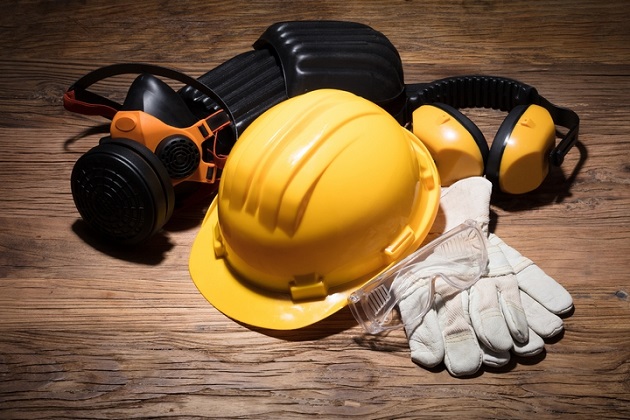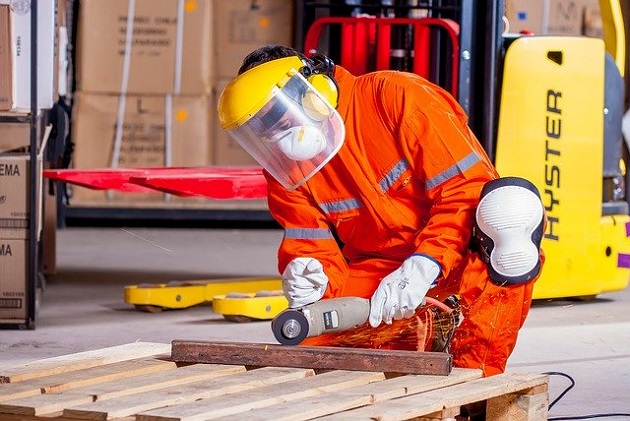How to Choose Safety Equipment for Your Workplace
Efficiency is critical for any business and as a business owner you should do everything you can to strengthen overall efficiency. If you are part of the industrial environment, there are many different things you can do, from investing in stools and ladders, so your employees can reach heights with ease to getting the proper safety equipment to avoid workplace injuries.
As an employer, it’s your legal duty to provide employees with the right training and equipment to ensure they can work safely at all times. Essential equipment should be provided to your employees to ensure they are protected from health and safety risks. Safety supplies and protective equipment keep worksites secure and help you ensure full compliance with safety regulations.
Different Types of Safety Gear

Generally, safety gear definition is the protection used by workers to avoid injuries, casualties and life-threatening situations. Different types of safety gear are used by workers, depending on the nature of risk involved in the work.
In construction operations, for instance, hard hats, coveralls and foot gear are considered safety gear, while in welding operations the dark welding helmets are used as a safety supply. Safety signs warn employees and others of potential hazards, alert them to the location of safety gear and exit routes, while traffic safety gear is used to keep traffic moving in the right direction and block off potential hazards.
To make sure you choose effective safety gear, you can make a list of everything your workers need to stay safe. You can select from a wide range of safety equipment that can help you increase workplace safety in any type of working environment, from low-risk office spaces to high-risk construction sites.
Personal protective equipment (PPE) is worn to minimise exposure to hazards that cause serious workplace injuries and illnesses. They may result from contact with physical, chemical, radiological, mechanical, electrical or other workplace hazards. The following are some of the most commonly sued items.
- Head protection where there is a risk of falling or flying objects
- Eye protection, including safeguards against grit, dust and sparks
- Ear protection to protect hearing if sound levels exceed 90 decibels
- Hand protection to protect workers from cuts, abrasion and chemical burns
- Foot protection to protect feet from sharp and heavy objects and from falling
- High visibility equipment to protect workers by warning forklift drivers
- Safety signs to warn of potential hazards and the requirement to wear PPE
- Tools specially designed to make common tasks easier
Tips on How to Choose the Right Safety Equipment for Your Workplace

Many working environments require PPE, but choosing the right gear can be a challenge. Make sure you understand the qualities of different PPE and get the right gear to maintain a safe environment for your employees. Here are the most important factors to consider when choosing PPE for your workplace.
Hazards
The best PPE for your workplace depends on the potential hazards of your workplace and the level of risk. To provide the right PPE, you can undertake risk assessments for each category of employee. This is the most important step in PPE compliance as it’s the basis from which the entire PPE program is built. You need to be open-minded and realistic during this phase of the process and understand each hazard faced in your workplace. Identify potential hazards and look for different types of PPE to make sure you choose the most suitable items for your work environment.
Proper Fit
It’s important to select items that will allow your employees to complete their duties without causing any difficulties. When selecting PPE, choose the correct fit and garments that allow for a full range of motion. Protective equipment is available in multiple sizes and care should be taken to select the proper size for each employee.
Comfort
Additionally, consider the comfort of our employees when choosing PPE. If it’s not comfortable to wear, then it can easily distract employees from their tasks and may result in injuries. Make sure to select PPE that has a comfortable fit and offers sufficient airflow to avoid heat stress. This can be quite helpful if working in a hot and humid environment or environment where workers are exposed to high heat.
Weight
This is yet another important factor to consider when choosing PPE for your workplace. The weight of PPE can affect your employees’ range of movement, so heavy PPE can put workers at risk of work fatigue and affect their overall productivity and performance. That’s why it’s always a good idea to choose lightweight PPE, however, you need to make sure the materials are fit for the purpose and strong enough to withstand damage.
Design
Always choose PPE that is well designed and made from quality materials. If employees find that PPE is simple to wear, it may encourage them to wear protective clothing and follow the health and safety policies of the workplace, which can significantly reduce the likelihood of accidents and injuries.
Ensure Proper Wear, Care and Disposal

Once the correct PPE is selected for your workplace, you must communicate that decision to your employees and ensure they are properly sized and trained. Training starts with ensuring that every employee knows what PPE is required and when. Employees should try on PPE and do simulate work activities to test the fit. Training should also cover the limitations of PPE, proper care and maintenance and disposal. For the final step, you must verify that employees know, understand and follow the PPE training.